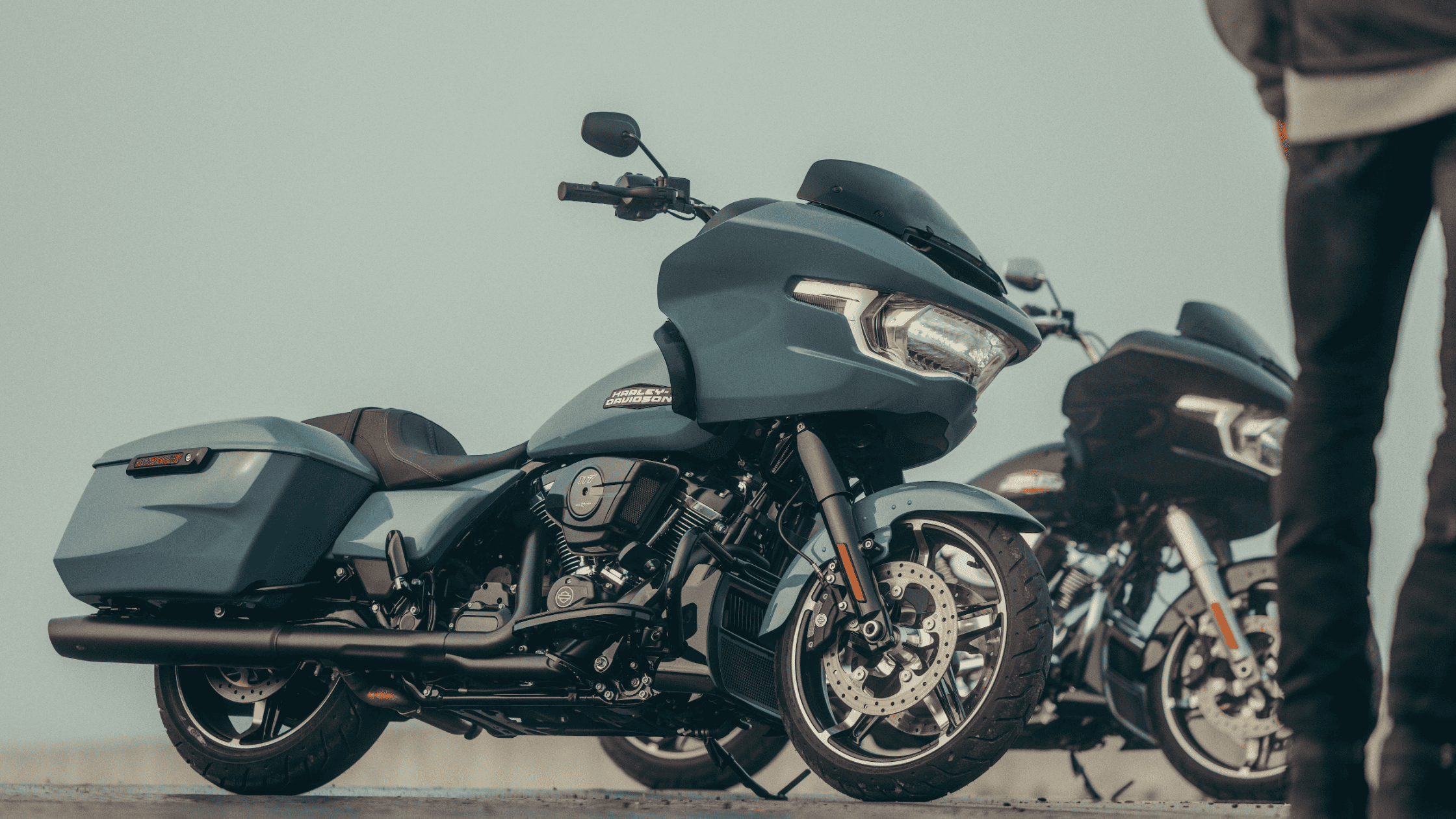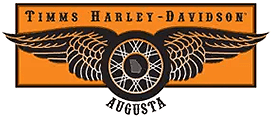2025 Harley-Davidson® Road Glide® near Evans, GA

The 2025 Harley-Davidson® Road Glide® is engineered to deliver a balance of aerodynamic efficiency, engine performance, rider comfort, and integrated technology. Its design combines a distinct Sharknose fairing with advanced systems aimed at improving handling and rider experience during extended rides. This model integrates modern engineering solutions to enhance stability, control, and connectivity without compromising the classic Harley-Davidson® character.
Engine Performance: Milwaukee-Eight® 117 Power and Efficiency
The 2025 Harley-Davidson® Road Glide® is equipped with the Milwaukee-Eight® 117 V-Twin engine, a liquid-cooled power unit that produces 105 horsepower and 130 foot-pounds of torque. This engine’s increased displacement supports stronger acceleration and sustained torque delivery across a wide rpm range. The liquid cooling of the cylinder heads aids in managing thermal conditions, which helps maintain consistent engine output during long rides or in raised temperatures.
Fuel efficiency is rated at approximately 44 miles per gallon, an outcome of careful engineering that balances power and economy. The engine’s design focuses on reducing heat buildup and enhancing performance consistency, resulting in reliable output regardless of environmental factors or riding style. The rear suspension system utilizes asymmetric emulsion shocks that allow quick adjustments to adapt to changing road conditions and rider preferences, contributing to improved ride quality and stability.
Design Innovations: Aerodynamics and Rider Comfort
The 2025 Harley-Davidson® Road Glide® model continues to feature the Sharknose fairing, which has been developed using computational fluid dynamics to optimize aerodynamic flow. This design reduces helmet buffeting and wind resistance, minimizing rider fatigue on long-distance rides. The fairing also incorporates air vanes and a streamlined windshield that further refine airflow management.
Wheel sizes are set at 19 inches in the front and 18 inches in the rear, using cast-aluminum construction for a combination of durability and reduced weight. These wheels are available in chrome or black trim finishes to suit aesthetic preferences without compromising structural integrity. The seat is crafted to offer comfort over extended periods and maintains a low seat height of 26.6 inches when loaded, allowing a range of rider sizes to operate the bike comfortably.
Handlebar adjustments allow for 27 degrees of movement forward or backward, enabling riders to fine-tune their riding position for better control and reduced fatigue. Paint options include seven factory finishes, with the Factory Custom Mystic Shift paint changing color in response to sunlight exposure. This adds a technical nuance to the bike’s appearance without affecting functionality.
Technology Integrations: User Interface and Connectivity
Central to the 2025 Harley-Davidson® Road Glide® is a 12.3-inch color TFT touchscreen display that integrates navigation, media, and vehicle information into a single interface. This display supports embedded GPS navigation and Bluetooth® connectivity, facilitating hands-free phone calls and audio streaming. The user interface is designed for clarity and minimal distraction, with responsive touch controls that allow riders to access critical information quickly.
The audio system is housed within the fairing and includes speakers engineered for clear and loud audio output. This system supports various audio sources, controlled through the touchscreen. The underlying software platform is Skyline™ OS, which offers smooth operation and quick response times.
Safety Features: Rider Assistance and Stability Systems
The 2025 Harley-Davidson® Road Glide® incorporates a suite of rider safety technologies designed to improve control and reduce risk in various situations. The Anti-lock Brake System (ABS) prevents wheel lock during braking, allowing the rider to maintain steering control during emergency stops. Electronic Linked Braking (ELB) further enhances braking by distributing braking force between the front and rear wheels when the front brake lever is applied, improving overall stopping efficiency.
The Traction Control System (TCS) manages rear-wheel spin during acceleration, helping maintain grip on slippery or uneven surfaces. The Drag-Torque Slip Control System (DSCS) reduces rear-wheel lock-up when decelerating abruptly or shifting gears quickly, particularly on wet or slippery roads. These systems operate continuously and adjust dynamically based on riding conditions.
Vehicle Hold Control (VHC) is included to maintain brake pressure after stopping, which is useful during hill starts and prevents unintended backward movement. This feature activates when the brake lever or pedal is applied and remains engaged until the throttle is opened or the brake is released. It should not be mistaken for a parking brake but serves as an aid during stop-and-go riding.
Additional cornering safety systems account for motorcycle lean angles. Cornering Enhanced ABS (C-ABS) adjusts brake pressure during turns to prevent wheel lock while maintaining stability. Cornering Enhanced Electronic Linked Braking (C-ELB) modulates front and rear brake distribution in corners. Cornering Enhanced Traction Control System (C-TCS) manages rear-wheel spin during acceleration through curves. Cornering Enhanced Drag-Torque Slip Control System (C-DSCS) prevents rear-wheel slip or lock-up when downshifting or releasing the throttle in corners. These cornering systems provide increased stability and rider confidence during complex maneuvers.
A Tire Pressure Monitoring System (TPMS) continuously monitors air pressure in the tires and alerts the rider if pressure falls outside of recommended ranges. Maintaining correct tire pressure supports vehicle handling, tire longevity, and overall safety.
